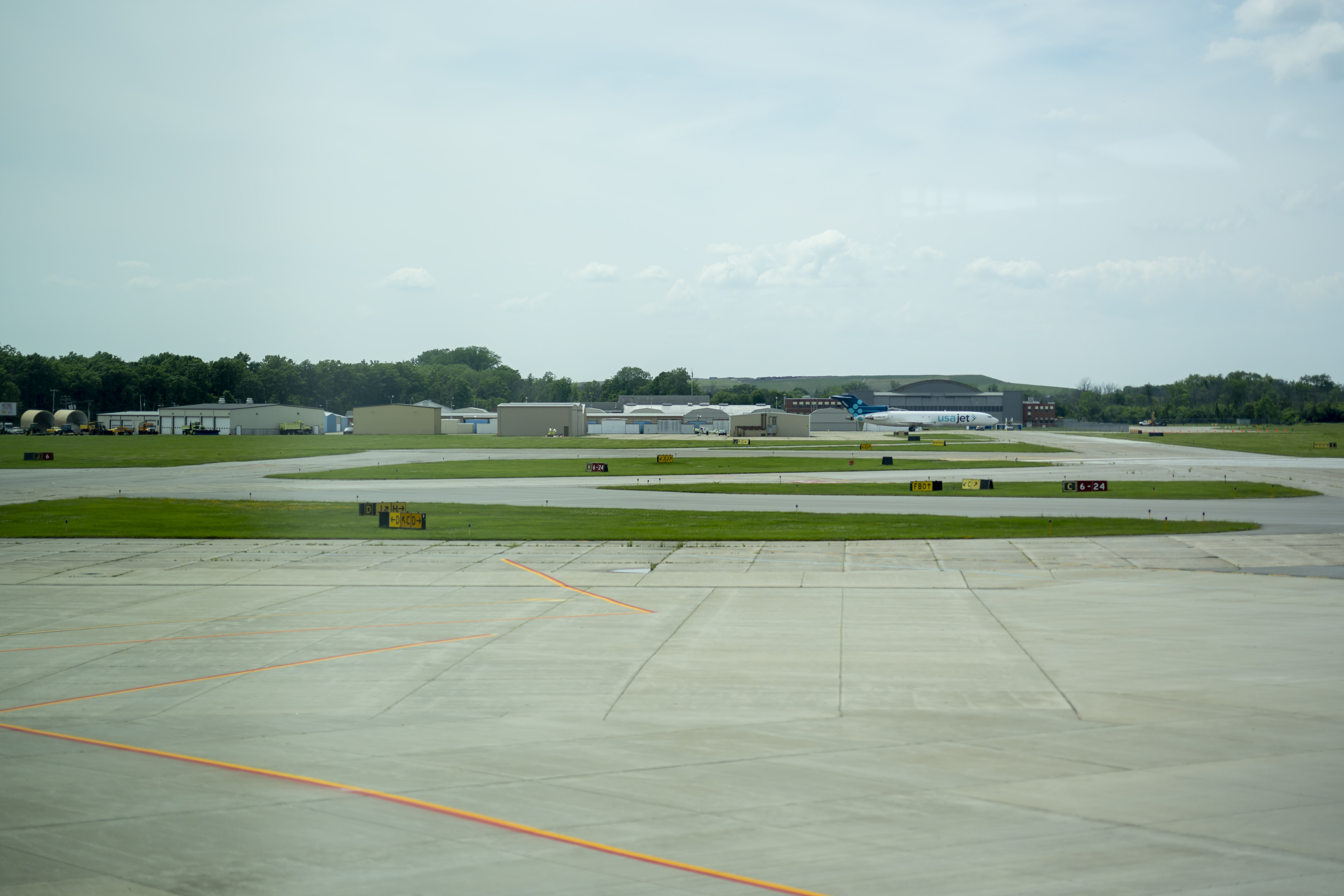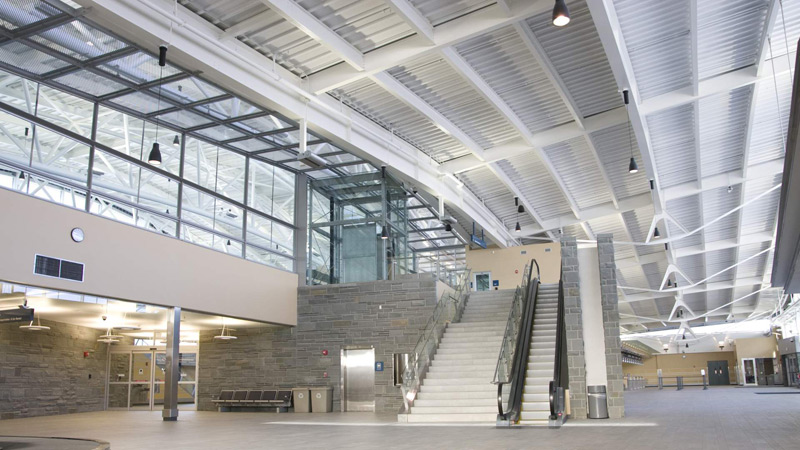
Airport Specifications

Terminal
| Terminal Size | 69,430 square-feet |
| Terminal Cost | $31.5 million |
| Facility | Ability to turn a B-747 international flight in 1½ hours; and a domestic B-757 flight in 1 hour |
| Ticketing | Ten check-in positions Space available for self check-in kiosks |
| Security Checkpoint | Two inspection lanes, expandable to three lanes |
| Aircraft Gates | Two - with Passenger Boarding Bridges Two - ground loading |
| Customs Immigration | Design from input provided by the respective federal agencies |
| Wi-Fi | Free in designated passenger areas Runway |

Runway
Niagara Falls International Airport’s airfield system consists of three runways: 10L/28R, 06/24, and 10R/28L, and 13 associated taxiways.
Runway 10L/28R is the primary use (main) runway and is 9,825 ft. in length by 150 ft. wide. The maximum take off distance available (TODA) is 10,825 ft. The maximum landing distance available (LDA) is 9,825 ft. Runway instrumentation includes both precision and non-precisions approaches. Runway 10L has a non-precision approach which contains a VASI (Visual Approach Slope Indicator) and HIRL (High Intensity Runway Lighting). Runway 10L/28R is used for large aircraft and military operations and currently will support a dual-tandem aircraft at 800,000 lbs. The design aircraft is a Boeing 747.
Runway 06/24 is 5,188 feet by 150 feet and is considered the crosswind, visual approach runway, with REILs and PAPIs at both ends.
Runway 10R/28L runs parallel with the primary runway and is 3,975 feet by 75 feet. This is a visual runway with REIL’s and PAPI’s at each end. Runway 10R/28L is a considered to be a utility runway used by general aviation aircraft and enables simultaneous operation between Commercial and GA aircraft.
The three runways are supported by a system of 13 active taxiways.
The airport has a state of the art above ground storage Fuel Facility with 48,000 gallons of jet A fuel capacity and 10,000-gallon AV gas 100LL. This facility can be expanded to accommodate an ultimate build out of up to 200,000 gallons.
Airport rescue and firefighting services are provided by the Air Force and are sufficient by FAA certification standards to permit the use of the airport by any size aircraft. This service is available 24 hours a day, seven days a week.